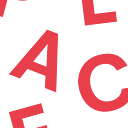Patterns Across Places (3)
June 2020
Lankelly Chase Place Action Inquiry and COVID-19: What patterns are we spotting across the different places?
Max French
This third blog covers the final month of ‘lockdown’ period commencing in March, which together with the last two shows how the Place Action Inquiry adapted to the immediate aftermath of COVID-19. Drawing toward the end of lockdown, some government messaging envisioned a return to relative normality. Most significantly for our partners, opening up avenues for personal and face-to-face contact created the possibility for reinstating services which had been abruptly halted three months earlier.
Returning to normality?
Our partners had described a sense of opportunity in the immediate aftermath of lockdown — their relatively unconstrained remit and the strength of relationships they had built put some in a useful role in the immediate crisis response. Three months following and with the end of lockdown drawing closer, some found fewer doors open to them and increasing difficulty sustaining people’s engagement. Their contacts were increasingly drawn away into a new crisis response mode, navigating rapidly emerging and often ambiguous guidance from central government a range of expert bodies to open back up safely and responsibly.
We also detected that in some of our key contacts (particularly ‘associates’), the toil and emotional labour began taking its toll. Some had been shut out of processes they had a role in creating, were let down by place contacts, or described meetings where they ‘lost [their] rag’ — none novel developments in their own right, but the regularity was notable. Some found it necessary to change tack slightly, stepping back (or ceasing volunteering) from work on immediate crisis response, and instead regrouping and collecting thoughts. Others moved leave forward leave as respite. In this context, the hype of system-changing potential from COVID-19 rang increasingly hollow. As one said, “terms like ‘unprecedented’, ‘more so than ever before’ are played on repeat and they are driving me mad”.
Fear of missing out?
Our contacts described the conditions which gave them hope two months ago — e.g. better and less transactional relationships between the statutory and community sectors — reverting back to an unhelpful previous state. People spoke of fear not of the virus itself but of a missed opportunity for system change, and multiple people drew on the analogy of a ‘window of opportunity’ threatening to slam shut. That analogy is probably unhelpful, particularly given we do not know what is on the other side. We are emerging with some fantastic learning and a clearer idea of some key areas to explore in the Place Action Inquiry. We have some fantastic examples of how participatory approaches to local decision making might operate given the use of Lankelly Chase’s Emergency Funds, how co-production and storytelling methods can work at pace despite people being kept apart, or the ways in which it might be helpful to convene local actors around a place focus.
Place as an ongoing question?
Another significant development in the virus was that by June, COVID-19 was looking much more like a ‘place-shaped’ problem, affecting some areas more than others, amplifying demographic and income inequalities, and interacting with local contexts to create very particular challenges. Looking back much of the new structures created by our associates were concerned with the immediate and short-term crisis response. While helpful in that regard, it perhaps contributed to a sense of fragmentation and overload — in one area we counted at least six forums/partnerships connected to Lankelly Chase’s place work. We also began, probably quite unconsciously, various strands of work involved in joining things up with place as the connective tissue — reframing meeting spaces, streamlining our activities, building up ‘coordination teams’. This work had a different focus to the crisis response focus in months prior: rather than ‘how can we cope’, it was ‘where do we, as a place, want to end up?’ — a question which couldn’t be more relevant to our work, pandemic or not.
